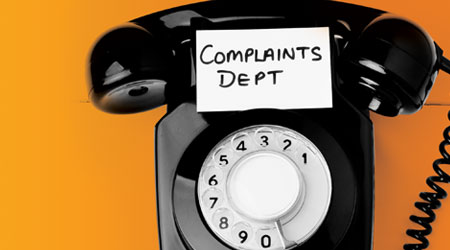
Survey outlines building occupant requests and complaints
Cleaning operations falls into the category of service. And as service providers, managers understand that the work of their staff is on display for all to see. Unfortunately, one misstep and it’s almost expected to receive feedback from building occupants.
Comments and complaints from these customers can vary from constructive criticism to downright bizarre requests. But knowing how to handle occupant complaints is a key skill for facility cleaning managers. Whether they have merit or not, comments must be handled appropriately. Given too much attention, these unscheduled tasks can be a time suck for staff. But left untended, complaints can pile up and result in even bigger problems for the department.
When speaking with managers about some of the comments they regularly receive, more than one said, “I don’t even know where to start,” or, “I could write a book of all the crazy complaints directed at the cleaning crew.”
It’s not a book, but Facility Cleaning Decisions did survey readers about complaints they commonly receive, areas of the facility that garner the most comments, and even a few of the most bizarre suggestions that have crossed their desks.
Top Complaints
It likely comes as no surprise that overall restroom cleanliness is the top complaint of building occupants across the country. Regardless of facility type, restrooms are high-traffic spaces that influence the perception of the overall facility. Some studies have even revealed that building occupants won’t return to a facility if the restroom is not well tended.
The restroom is so critical that it even garnered the No. 3 complaint — empty paper dispensers. Makes sense, since there are a number of factors at play here — traffic patterns, products used and labor issues.
To aid their end user customers, product manufacturers continue to explore adjustments to towel/tissue lengths, high-capacity dispenser features, and innovations that will minimize restocking frequencies. Managers are encouraged to test various products to find those that meet the specific needs within their facilities.
Outside the restroom, pest or bug cleanup is the second most common request plaguing custodial crews. Some speculate that this is attributed to an increase in public awareness of bed bugs. Other managers comment that infestation complaints are a direct result of occupant behavior — food left in desks or lockers, or the all too common food item left on the floor to “monitor” cleaning efficiencies.
There are always going to be naysayers in a facility that test the department because they don’t believe cleaning is being done properly. Custodial workers often come in after business hours to complete tasks, and building occupants rarely understand cleaning specs or processes. This results in an overall opinion that cleaning frequencies are too low, a realization that ranked fourth of the most common complaints from occupants.
To combat this cleaning perception problem, managers have implemented a few public relations strategies. Thirty-three percent of cleaning executives have been very successful with supplying education and additional communication to building occupants about cleaning programs and processes. But an additional 49 percent found the added education/communication to be only somewhat successful at reducing complaints.
Increasing training of the custodial staff has also helped departments minimize complaints from building occupants. Forty-four percent of managers commented that training staff more frequently was very successful at improving perception, while 40 percent received fewer negative comments after they changed or improved processes altogether.
Although these adjustments are all-around positive for the facility, they do not address speculation that a cleaning staff actually shows up every night, after hours, to tend to the needs within the facility. In buildings where this was the perception of the cleaning department, managers explored shifting their existing staff to day cleaning.
Moving from cleaning in the evenings to a day cleaning program is a big adjustment for the custodial workers, as well as building occupants. But it allows building occupants the opportunity to observe cleaning functions, which can alleviate complaints that target custodial operations.
According to the survey, 36 percent of readers found implementing a day cleaning program to be very successful, and 40 percent said it was somewhat successful. Only 10 percent tried it and found day cleaning to be unsuccessful at reducing occupant complaints.
Strange Suggestions
As much as managers try to accommodate building occupants, there will never be a time when they can unplug the complaints hot line or close up the suggestion box. At the very minimum, cleaning workers will be forced to field some bizarre requests. Although frustrating at times, these occupant inquiries are what make up the stories that are shared most often.
Here are a few examples straight from the survey:
• “Could you prevent people from being so messy in the restroom?”
• “Can you change the temperature in my cube, but make sure my neighbor is kept warm?”
• “You should remove the smoke urns because smoking is a dirty habit.”
• “The ice maker makes ice that is too cold.”
If you’d like to share a complaint you’ve experienced, a pet peeve, or just an overall frustration with the job, email corinne.zudonyi@tradepressmedia.com. All submissions will be kept anonymous.
Common Cleaning Complaints

 The Down and Dirty on Cleaning in Virus Season
The Down and Dirty on Cleaning in Virus Season How Surfactant Use is Expanding in Commercial Cleaning
How Surfactant Use is Expanding in Commercial Cleaning